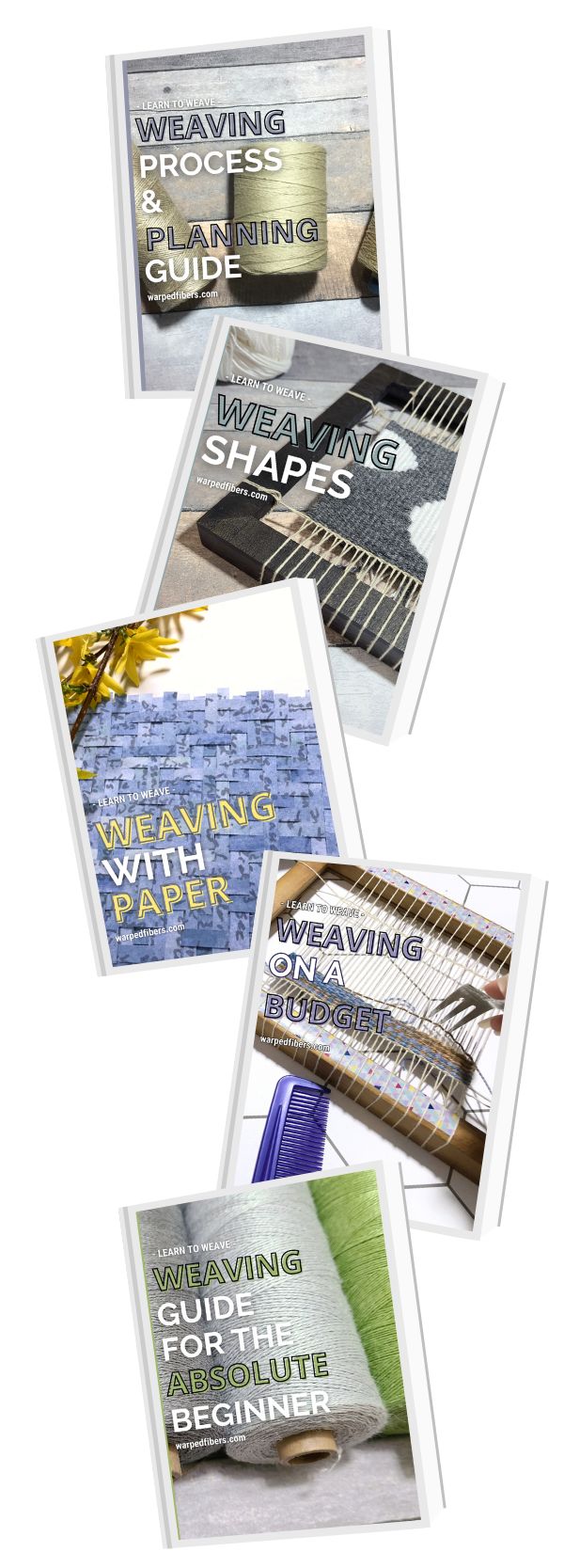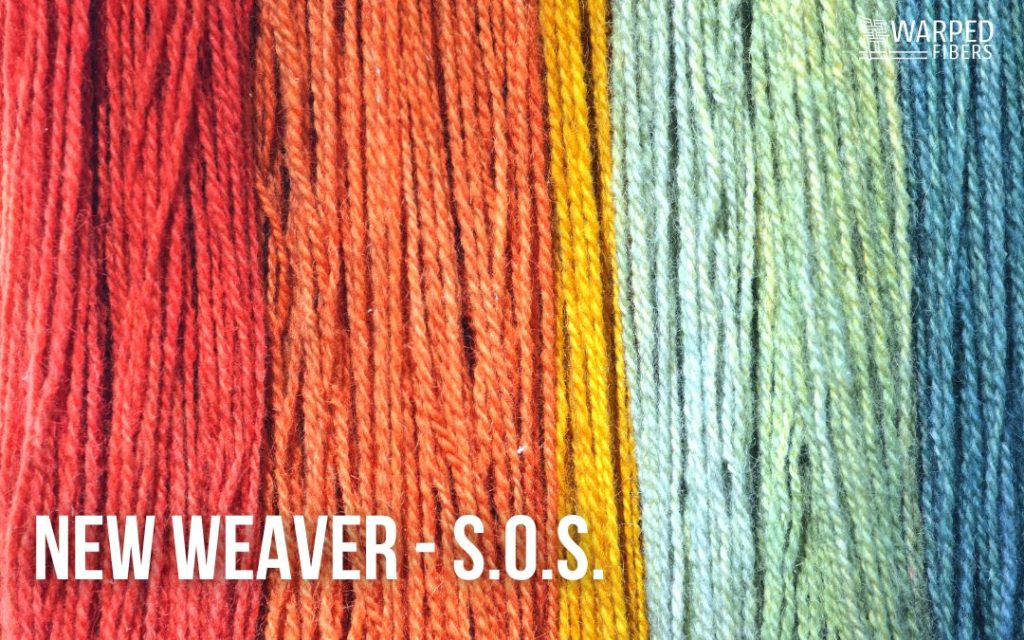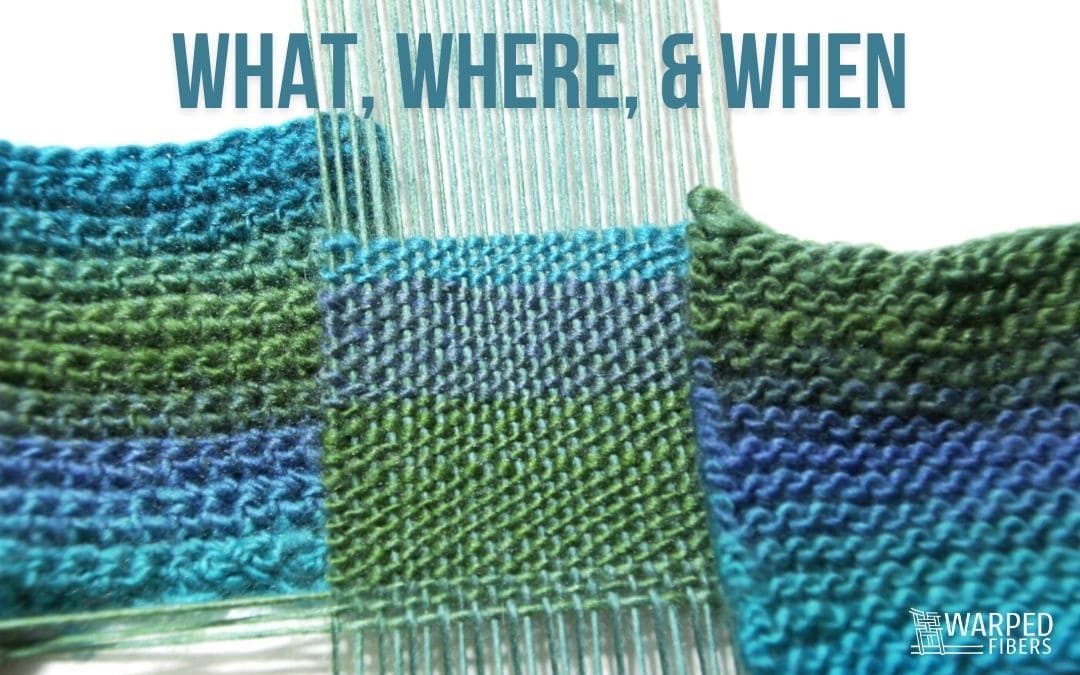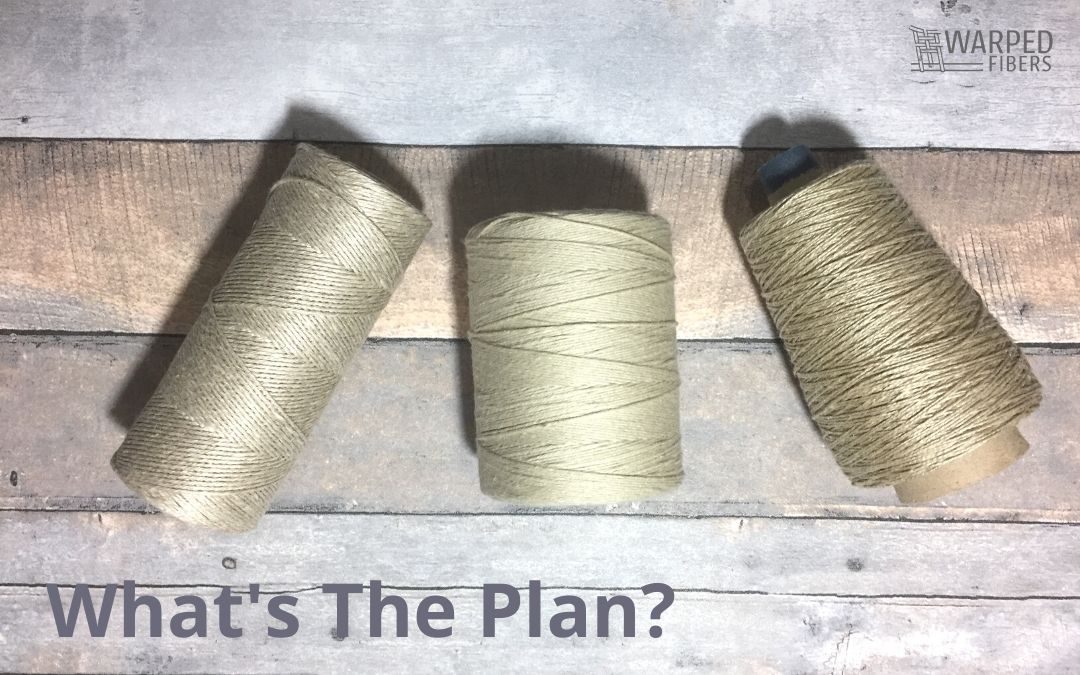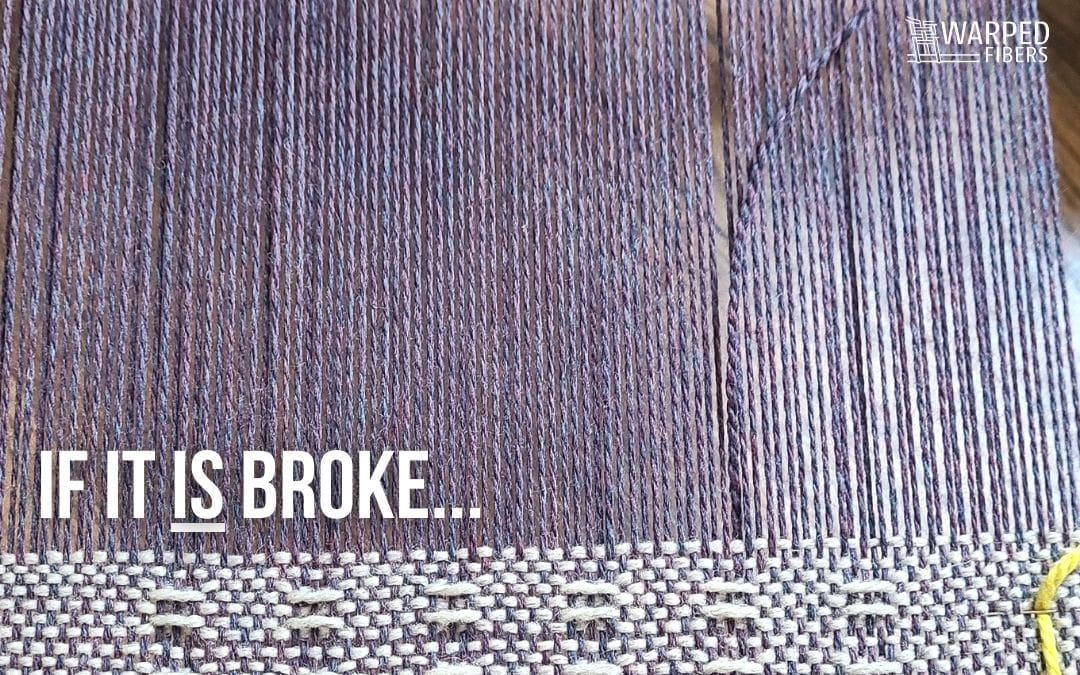If you have never thought about how to weave tapestry, this may seem like a weird question.
The correct way to weave a tapestry is obviously to start from the bottom and weave upwards and to weave from the front.
…right?
Let me be clear. That is what seemed obvious to me.
The actual obvious answer will probably be that the correct way to weave tapestry is the way you are taught. This is common for not just weavers, but really anyone learning how to do something new. You stick with what you know.
Let me be clear again, though.
There is no correct way to weave tapestry.
…only different ways.
These different ways all have precedent and the one you ultimately choose should be based on the pros and cons of each style. Do not be afraid to move past what you know if the pros outweigh the cons of a new way! You might just find something that works even better for you.
What does weaving from the front or back mean?
Let’s start out here: weaving from the front means that the area that you are seeing when you weave will be the front of the weaving. In this case, your tails will be out of the way and fall behind your weaving.
This type of weaving is said to focus more on creativity as you can more easily make decisions as you go to what the final weaving will look like.
Weaving from the back means that the area you are seeing when you weave is the back of your weaving. This will mean the tails from your wefts will be on the surface you are seeing. A focus on technique is a common reason to weave from the back since you are not seeing the weaving as it will be displayed.
The slight visual difference of viewing something from the back can be enough to take you out of the subject matter and into the weaving process.
There are now 2 ways to take it – either purchase the whole course at once for a discount or “create your own” course by purchasing just the parts you want! Either way, get 10% off for being a member of the Warped Community!
Archie Brennan’s legacy
Weaving from the front of the weaving is one of the most common ways that it is taught in the US. This is partly because of Archie Brennan who led a transformation in American weaving.
Archie Brennan was a Scottish weaver who lived and taught weaving all over the world. As a young Scottish weaver, he was taught to weave from the back with a focus on following the cartoon.
In his attempt to introduce more creativity into his weaving he shifted to weaving from the front to focus on imagery and not just technique.
Brennan served in many prominent tapestry positions including director of Dovecot Studios in Edinburgh, consultant for both the Victorian Tapestry Workshop in Melbourne and the National Arts School in Papua, New Guinea.
After moving to the United States in 1993 and continuing to teach, his weaving style became very common around the country.
Should you weave from the front?
Put the image first
Weaving from the front allows you to see the exact outcome of your finished project. This is because since you are looking at it the “right” way there will be no surprises when you take it off the loom.
This is why weaving from the front is generally considered an image-forward (literally) approach to weaving tapestry.
The main concern is that it looks the way you want it to, and not necessarily that the techniques are perfect. As long it looks right – you are good!
This is definitely a pro in my book!
All that being said, weaving from the front does not mean that proper technique should be ignored. Technique is very important and should be a very large consideration when weaving. For me, though, when it comes down to it – the way it looks is my main priority.
You should always choose the options that align with your main priorities.
Another pro of weaving from the front is that you do not have to worry about accidentally creating floats on the front of your weaving. This is because you will be able to see any mistakes right away and you will be able to correct them as they happen.
Pulling through your butterflies
A con of weaving from the front is dealing with all of your yarns.
You usually have 2 options when it comes to working with your shuttles or butterflies. Either they can sit on the top of your weaving or fall beneath it when not in use. Both of these options come with their own pros and cons.
If you are weaving with a lot of color changes then that will mean that you have many shuttles or butterflies to deal with. If they sit on the surface of your weaving then they can get in the way of you being able to see your weaving.
This can essentially defeat the purpose of weaving from the front. If you want them to fall so they are out of the way then you really only have the option of using butterflies or tapestry bobbins because your shuttles would unwind themselves. It can also be annoying – especially if you have a lot of color changes – to have to reach underneath your weaving to pull through your bobbins each time.
Inlay
Some techniques can be simpler to do from the back than they are from the front. Inlay is a great example of this.
Inlay is a technique that uses an extra thin weft in sections of each pick to create a subtle image.
When you weave inlay you will have floats on the back of your weaving because the weft does not go to each selvedge. Instead, the weft travels vertically on the back of your weaving to get to the next shed. If you weave inlay from the front then you will need to reach around to get to your inlay weft constantly.
Keeping your weaving smooth
One other thing to consider is that when you weave from the front you may be abrading the surface of your tapestry.
Leaning, rubbing, and otherwise just touching the front of your tapestry could eventually make the surface become fuzzy. Yarn is subject to friction and reducing your friction will create a cleaner weaving. Wool yarns are going to be more prone to this, but in general, if you are careful you should not have an issue.
Weaving from the back
Focus on techniques
As you can probably guess, the cons of weaving from the front become the pros of weaving from the back. And vice versa.
There is a reason that traditionally weavings woven by schools were woven from the back. This focus on technique was important because they were executing the ideas of a master artist. They were not the ones making the creative decisions.
That being said, even if you decide to weave from the back you can still make your own creative decisions! You are the one that will be creating your cartoon, choosing the colors, and making any other decisions. If focusing on technique is important to you then you have the option to make most of your choices before the actual weaving process. This way you can focus just on how to weave what you want and not what it will look like.
Your weft tails can get in the way
Much like the way your shuttles or butterflies could get in the way if you decide to weave from the front, your tails could get in the way if you weave from the back. This may not be as big of a deal though, because you are not going to be as focused on your image when you weave this way.
If you do not like the look of a messy tapestry, though, this will drive you mad.
One important thing to note is that when you are weaving from the back you will need to mirror your cartoon. If you do not do this then you will turn your weaving around when you are finished and it will be backward!
What direction should you weave?
Another question you may have never asked yourself is whether or not you should weave from the bottom of your weaving. While weaving from the bottom is the most common direction to weave your tapestry, you also have the option of weaving from the side!
What I mean by that is you would weave your tapestry rotated by 90 degrees. This can be a really good option if your image has a lot of vertical lines.
Look at the example cartoon below.
This specific image has a lot of vertical diagonal lines. If you were to weave this image right side up then creating those diagonals would be really difficult. You would need a weaving with a very high EPI to create smoother diagonals. I am not going to lie, I gave up trying to weave this tapestry right side up at the same EPI I used for the sideways version.
It was just too annoying trying to create these diagonals plus I opted to do joins instead of split tapestry and it was taking forever.
You can see in the image below how it was turning out compared to the finished version that was woven sideways.
The tapestry that was woven sideways is a much better representation of the cartoon.
Learn more about EPI and warp sett here.
When you are planning out your tapestry it is important to keep in mind the shapes you will be weaving and techniques you will be using. These will help you to determine how you want to set up your loom.
As for me? Most of my tapestries have horizontal lines and discontinuous weft that starts from the selvedges. This means that weaving from the bottom of my tapestry works the best for me. I also weave from the front because when it comes down to it, the techniques are secondary to the finished outcome.
As for you? Try out different ways to weave and you may just surprise yourself. You can also mix it up depending on what you are weaving.
Remember, there is no right way to weave tapestry! Take advantage of the fact that tapestry can be woven many different ways depending on the weaver and the weaving.
Resources
https://textilesocietyofamerica.org/9716/in-memoriam-archie-brennan
https://www.brennan-maffei.com/
⇣ Love It? Share It! ⇣
You May Also Like

















